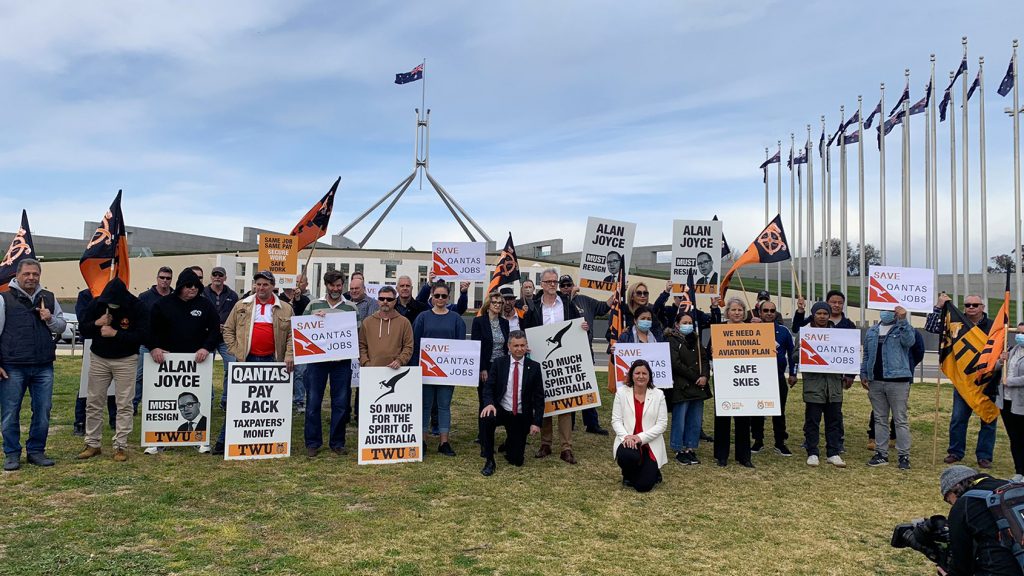Pandemic support for Australian aviation has been woeful and is about to get worse
March 5, 2021

The Australian Government needs to act now to save the aviation industry and protect the country’s post-pandemic economy.
Australia’s economy is absolutely reliant on aviation but the Morrison Government is yet to consider continuing support past March. The nation’s JobKeeper scheme runs out at the end of the month and there seem to be no plans to extend it, despite the industry’s continuing Covid-19 problems.
“It’s not an option to do nothing,” ITF’s Scott McDine told ABC NewsRadio “Australia has such a heavy dependence on international travel and trade. We’re just about at the end of the month and we have a government which still hasn’t made a decision…we don’t even know if they’re going to make a decision.”
Australia lags behind
A new report was tabled by McDine before an Australian Senate Committee hearing on Wednesday (3 March) outlining how far Australia has already lagged behind other countries in its support for the industry. It has spent around 0.136% of GDP on supporting aviation, almost at the bottom of the league table compared with other countries (support has ranged from 0.11 to 1.74% median of GDP with an average of 0.24%, according to the report).
McDine benchmarks Australia’s performance against that of Singapore: “The evidence is in the outcomes ,” he told ABC. “Job losses in the major carriers have been roughly half that of Australia. They’ve had job losses of about 15%. Ours are over 31%. We need to do better.”
McDine’s concern is that Australia’s economic recovery will be slowed because aviation will be missing skills and experience as it gets back on its feet. If a decision is not taken quickly to extend the JobKeeper scheme, at least for aviation, this situation is likely to become dramatically worse, particularly for Australian aviation workers.
“Australia is an island nation, remote geographically, and very large,” he said. “When we see the aviation sector brought to its knees, it’s absolutely essential that we act in the interests of the broader economy.”
Singapore’s better approach
The main difference between Singapore and Australia’s Covid responses has been in how sectors were prioritised. Australia has had a broad-brush approach with its JobKeeper programme applied the same across sectors. Singapore adopted a three-tier approach, giving priority to the industries most vital to its economy. For obvious reasons, aviation was in tier 1, with the result that Singapore’s airlines are now in a much healthier position than Australia’s.
“According to the OECD, Australia ranks 18th out of 28 countries in government aviation assistance programmes,” McDine said. “We have to do better and that’s why the International Transport Workers Federation is calling for an AviationKeeper benefit to be extended after the expiry of the Jobkeeper scheme in March.”
Singapore has already extended its support for aviation by another six months. Indecision or delay on wage subsidy support by the Australian Government could significantly hamper the ability for the economy to bounce back from the pandemic.
Australia compares poorly
The McKell Institute report, commissioned by ITF notes: “Australian Government’s support compares poorly to that provided by the governments of other countries.”
It points out that before the pandemic 40,000 people were employed by the two major Australian airlines and another 50,000 in smaller airlines and the supply chain. Australian tourism employed over 600,000 while higher education accounts for 134,000 people — both rely heavily on aviation, as do a host of other businesses.
International travel in and out of Australia has dropped to almost nothing while domestic flights are down nearly 80% (October 2020 compared to October 2019).
The report says that the aviation business is not expected to even start recovering until the second half of 2021.
Tags: Australia, Australian Senate Committee, AviationKeeper benefit, COVID-19, JobKeeper scheme, McDine, protecting jobs, protecting key workers, Singapore
